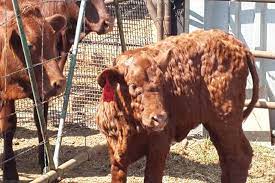This is the first case reported in Pakistan of a rapidly spreading skin disease in cattle. Is it actually Kettle Pox or Lampy Skin Disease?
Lumpy skin disease (LSD) is caused by the pox virus in cattle, after which the skin of cows and buffaloes becomes granular.
LSD is transmitted by insects and the most effective way to control it is vaccination.
Lampy Skin Disease history:
Over the past five years, Lumpy’s disease has spread from the Middle East to southeastern Europe, southwestern Russia, and western Asia.
The first case of LSD first appeared in Zambia in 1929, and is now spreading throughout Africa and the Middle East.
In 2015, the virus entered mainland Europe, Greece and Russia, and in 2016 it spread to the Balkans in the east, Moscow in the north, and Kazakhstan in the west.
It is currently considered the fastest growing disease of the worst outcomes, with the outbreak of the disease in cattle causing significant damage to productivity and trade.
For the first time in Pakistan, cattle and buffaloes are getting sick due to the spread of skin disease Lampy virus in Sindh.
Director General Livestock Sindh Nazir Ahmad Kalhoro said that limpi skin diseases are causing smallpox-like sores in cattle skins while milk and weight loss in cattle infected with the virus is declining.
Lumpy Skin Disease (LSD) Transmission:
Various experiments are being carried out on the spread of the disease, and experimental work and research have shown that the effects of infecting an infected animal with any other animal are negligible.
The disease usually spreads in hot, humid climates while the disease usually subsides in the colder months.
Diagnosis of LSD:
The disease is very easy to diagnose in cattle, cows and buffaloes have swollen skin and rashes begin to appear.
The disease is confirmed by laboratory tests, and tests are available in laboratories to detect the DNA of viruses or antibodies.
Lampy Skin Disease Prevention:
Lymphatic disease can be prevented in four general ways.
1: Control of movement, ie quarantine animals suffering from this disease.
2: Vaccination
3: Slaughter campaign
4: Management Strategy
Treatment of Lampy Skin Disease:
There is currently no cure for the virus that causes Lyme disease, so vaccination is the most effective way to control the disease.
Secondary skin infections can be treated with non-steroidal anti-inflammatory drugs and antibiotics.














